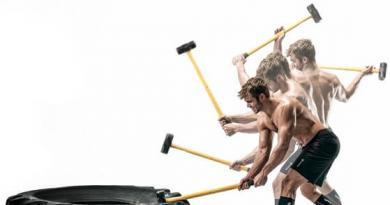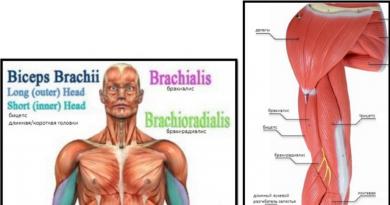Anthropometric measurements were partially touched upon by us in a previous article. In the same place, we described the importance of their implementation and for what purpose they are performed. Many questions remain unsolved, and it is here, in the second part of the article about the human body, that we will try to cover them.
As we said, before you start physical activity, you need to fix three things: the starting point, the desired goal and the path to achieve it. In other words, it is necessary to fix the current state of health and forms, as well as indicators associated with them. Determine the final desired result (we talked about this in the article). And comparing the initial data with the desired end result, choose the best way to achieve the goal. These are the three essential steps that a personal trainer (or yourself) should follow when working with clients.
By themselves, body measurements will give you little if you do not conduct a comparative analysis with tables of ideal indicators of height, weight, age, fat content, and volumes of body parts. A comparative analysis is carried out in order to determine at what stage of physical development you are at the moment, as well as in order to understand what you should strive for and what you need to build on. And if we considered the indicators of height, weight, age and fat content in the previous article, then here we will first look at tables of ideal indicators for men and women, then we will learn how to take measurements, and at the end, how often progress should be recorded.
Ideal volumes for men
So, let's start anthropometric measurements by determining the ideal coefficients of your body. They must satisfy the ratios shown in the table below. To determine your ratio, divide your weight in kilograms by your height in centimeters. If your weight is, say, 80 kg, and your height, for example, is 185 cm, and you want to know your ideal size for your bust, waist, and hips, divide 80/185 = 0.432. Thus, referring to the table, we see that the coefficient is between 0.423 and 0.451. So, to determine the volume of the chest, we calculate the arithmetic mean between 101.7 and 105.2. We get 101.7 + 105.2 \u003d 206.9 / 2 \u003d 103.4 cm. This will be your ideal chest volume. You understood how to carry out calculations, and now we present a table with which you will compare the data obtained.
In the same way, you can measure other parts of the body. The numbers that you can get from this table are just some reference value. If you have not had to lift weights before, and you have not subjected your body to stress, you can consider these numbers as the starting point in building a muscular body. Write them down and remember them like you started with. In the future, when taking measurements of the body, it will be interesting for you to look at the starting point and evaluate how far you have come and how much work you have done.
Ideal volumes for women
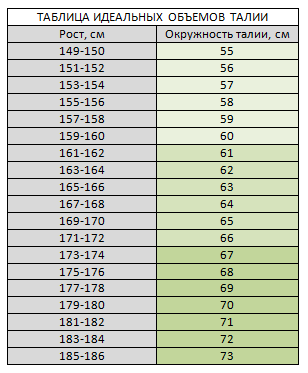 Below are tables reflecting the ideal (reference) indicators of height, weight, age, waist, hips and more. I emphasize that the information below refers to the ideal proportions for women. Men can safely skip this block.
Below are tables reflecting the ideal (reference) indicators of height, weight, age, waist, hips and more. I emphasize that the information below refers to the ideal proportions for women. Men can safely skip this block.
There are various formulas for determining the ideal weight. For some time, in practice, the ratio of weight and height was used according to Brock's formula: "Ideal weight is equal to height minus 100." However, it is now believed that this formula is designed for women 40-50 years old. The optimal weight for women 20-30 years old should be reduced by 10-12%, and after 50 years - increased by 5-7%. To date, tables and formulas are increasingly being used that also correct for physique. Using the following table, you can quickly and fairly accurately determine your ideal weight, taking into account height, age and physique.
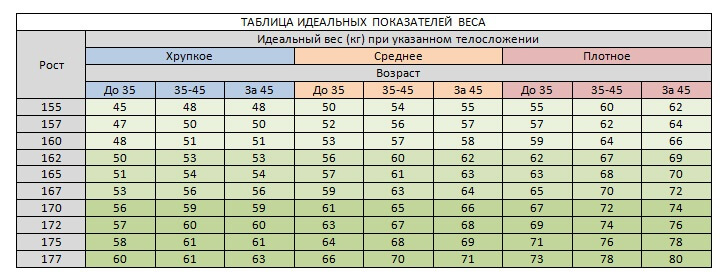
Here we also give a table of ideal hip measurements, taking into account height, age and body type.

For girls, it is worth noting that these indicators are ideal and your body at the moment may not match them. This is not at all a reason to be upset! On the contrary, these discrepancies can serve as a reason to sign up for the gym and start adjusting your figure in accordance with your preferences, and the tables given here will only help and tell you in which direction to move.
body measurements
Now we come directly to how exactly anthropometric measurements should be taken.
ADVICE. Before we get started, we need to be guided by the following tips. First: body measurements should be made with a regular centimeter tape. Second: the most suitable time for measurements is in the morning, that is, when the muscles are most relaxed. Third: the centimeter tape should not sag or, conversely, be overtightened. Fourth: for a more accurate assessment, take measurements in the same place several times (2-3). Fifth: keep a diary of measurements and photographs to track progress.
 Regarding the last point, we already talked about in our article, and it was about the fact that the diary is primarily important for the reasons that it will be difficult to track progress without it. If you do not keep a diary, then the progress, which takes place gradually, and perhaps in volumes will be several millimeters, will simply not be noticeable to the eye and it will seem to you that you are marking time. And this, in turn, can lead you to a loss of interest, a decrease in motivation and, ultimately, to a complete unwillingness to train, which in our case is naturally unacceptable. In order to avoid such deplorable consequences, you need to keep a diary.
Regarding the last point, we already talked about in our article, and it was about the fact that the diary is primarily important for the reasons that it will be difficult to track progress without it. If you do not keep a diary, then the progress, which takes place gradually, and perhaps in volumes will be several millimeters, will simply not be noticeable to the eye and it will seem to you that you are marking time. And this, in turn, can lead you to a loss of interest, a decrease in motivation and, ultimately, to a complete unwillingness to train, which in our case is naturally unacceptable. In order to avoid such deplorable consequences, you need to keep a diary.
You can often hear people say that they have different numbers. This often happens due to the fact that they measure the body at different times of the day. After training, it is pointless to take measurements, as the blood rushes to the muscles and they increase in volume. After a while, there will be an outflow of blood and muscle volumes will decrease, which will also affect the measurement results. As I said above, measurements must be taken in the morning.
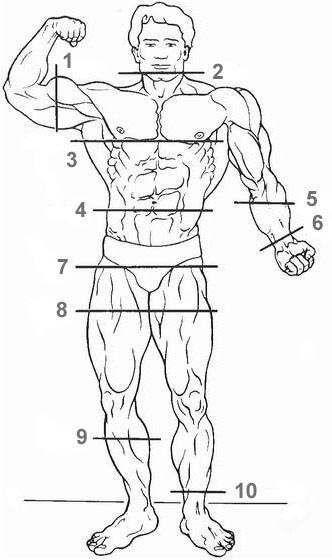 Try to avoid embellishing the numbers. Very often you want the results to appear faster, and in such a situation, some draw in their stomach, others pull the tape, others inhale a full chest of air, etc. Of course, everyone wants to achieve the desired result by any means, but you don’t need to deceive yourself. It won't work in your favor. Be objective.
Try to avoid embellishing the numbers. Very often you want the results to appear faster, and in such a situation, some draw in their stomach, others pull the tape, others inhale a full chest of air, etc. Of course, everyone wants to achieve the desired result by any means, but you don’t need to deceive yourself. It won't work in your favor. Be objective.
The figure shows exactly where it is necessary to take measurements of a particular part of the body: 1- biceps; 2 - neck; 3- chest; 4- waist; 5- forearm; 6- wrist; 7- pelvis; 8- thigh; 9- lower leg; 10- ankle.
Thus, based on all the above data, you are able to manage your progress and adjust your nutrition and training program on the go, focusing on what works for you and what does not. At first, this process may seem difficult, however, when you see the first results in the mirror, it will begin to motivate you to further move forward towards your goal.
Photo fixation
Just like anthropometric measurements, it is a fairly working tool for tracking your own progress. Numbers are good on paper, but there's no better way to see your form improve than by seeing your own figure at all stages of its development.
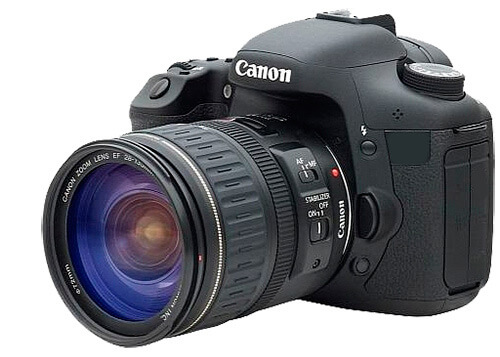 For starters, before you start exercising, it will be enough to take a full-length photo, in three positions: front, back and side. Later, when you start to progress and build up your muscles, you can move to a more advanced level and, as a person who is seriously involved in fitness and / or bodybuilding, be photographed in the positions of performing athletes: abs and thighs in front, double biceps in the back, triceps on the side, etc. d.
For starters, before you start exercising, it will be enough to take a full-length photo, in three positions: front, back and side. Later, when you start to progress and build up your muscles, you can move to a more advanced level and, as a person who is seriously involved in fitness and / or bodybuilding, be photographed in the positions of performing athletes: abs and thighs in front, double biceps in the back, triceps on the side, etc. d.
Thus, with regard to measurements and fixation, it remains to say the main thing. Body measurements and photo fixation are optimally carried out once a month. You can bind to a specific number of the calendar. For example, every month on the first day in the morning, fix all parameters: weight, fat, muscle volumes, take photographs and fix the results in a diary. Why once a month? Because this is the minimum period of time during which you can track a specific visible progress without the use of any drugs and means that accelerate this progress.
Conclusion
As it was indicated at the beginning of the article, in order to move somewhere, you need to determine the current state of affairs, the ultimate goal and the way to achieve it. The purpose of this article was to help determine the current state of affairs, learn how to conduct anthropometric measurements and record progress. Be patient in training, follow a diet, be objective in measurements and be critical of the results of photographic fixation, since, as you know, there is no limit to perfection.

